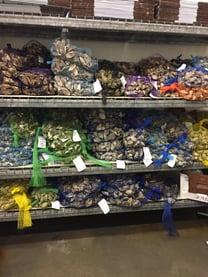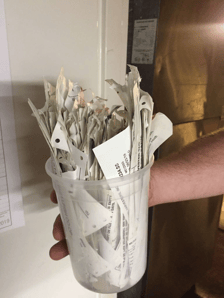At first glance really bad news, but:
1) The CDC estimates the percentage of unreported illnesses and scales up based on the reported cases. Better reporting leads to worse results. If historically consumers reported only 10% of cases, but today they report 30% the estimated number of illnesses would be a 300% increase--without any actual increase in disease.
2) Even ignoring the reporting issue, the industry grew way more than 54% over the last 10 years. On a percentage basis, the incidence of disease must be lower.
In other words, the percentage of shellfish consumers getting sick has declined. But even one sickness or death is too many. We should always be looking for improvements. Headlines like the above lead to more stringent regulations and a greater burden on the industry that may only add cost and not improve outcomes.
Having spent some time exploring the 489 page Model Ordinance and seeing what happens on farms, dealers and restaurants, I wanted to share with you our experience. As with many others, I think our current system is fine, but beginning to creak under a growing demand. Most notably the reliance solely on a paper based often handwritten system for tracebacks.
The shellfish traceability system relies a paper trail that let's regulators traceback through the supply chain in the event of an illness. Here is the general overview of how this works (note there are a lot of subtleties that I'm ignoring here).
1) Harvest Your Shellfish

You made sure the state hasn't closed the water for any sort of harmful algal bloom (which seem to be increasing everywhere). You comply with any Vibrio regulations--which mostly relate to getting the product on ice/refrigerated within a specified time.
.jpg?width=300&name=Image%20from%20iOS%20(39).jpg)
2) Fill out your harvest tags
Depending on the state, you have to do one tag for every bag and at least part of the tag is usually done by hand. If your area has a vibrio compliance plan, you must include extra data.
3) Complete your other paperwork
Harvest log, vibrio logs, shipping labels, invoices and the like. Make sure you also file your harvest reports with the state every month (or annually in some state)
4) Dealers take over

temperatures, wet storage and and the like. All while trying to read your handwriting.
Dealers replace your tags with their own, create a receiving log, keep track of
Depending on the supply chain route, this can happen numerous times between the farm and the plate.
5) Eventually the Restaurant

They are required to store tags for 90 days in chronological order. This is a typical storage system. When someone gets sick, regulators start here.
The result:
The average traceback takes over 4 weeks and over 50% of tracebacks fail because at some point in the chain the records are incomplete or unreadable.
In other words, despite spending thousand of hours and millions of dollars on compliance, the system seldom has the intended result of preventing others from getting sick.
We are in the midst of developing a solution to help farmers. What would you like to see?


